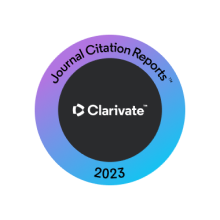Abstract
Background: Risk factors for postoperative chylothorax in children who had cardiothoracic procedures are not always clear. Due to complex course in post-operative care, It’s always challenging to find the risk factors, and their management. Objective: The aim of our study was to identify the incidence, risk factors and effective treatment approaches for chylothorax after pediatric heart surgery. Methods: Children who had the cardiac surgery and subsequently developed chylothorax were included in the study. The ratio of the experimental group to the control group was 1:2. Decannulations of extracorporeal membrane oxygenation (ECMO) were not included in the analysis of patient outcomes. For each patient, we keep track of their age, weight, gender, syndrome, RACH-1 scoring, fluid balance, bypass time, clamp time, redo operations, open or close heart surgeries, and rhythm difficulties. Care logs were kept for every single therapy that was administered. Primary outcome was chylothorax, with secondary outcomes included time in the intensive care unit (ICU), length of hospital stay (LOS), and death. Results: 5210 surgeries were performed in six years. 96 patients developed the chylothorax with incidence of 1.8%. In chylothorax group, mean weight was 6.7± 4.2, while mean age was 11.7 ± 15.2. Clamp time was 74.5 ± 53.5 versus 39.9 ± 13.7. Mean bypass time was 128.34(76.25) versus 84.3 ± 25.1 with an odds ratio 1.02 (Z test 0.0001). Six (6.3%) children with chylothorax had redo cardiac surgeries in the same admission (p-value 0.01) while none in other. Five (5.2 %) cases got operated by thoracotomy, three from left side. Mean Chest tube duration was 10 ± 7.8 days versus 3.8 ± 2.4 in control group. (p-value 0.02). chylothorax resolved (mean resolving time = 4 days) in 76 (79.2%) children with monogen formula. Two patients receive midodrine with no significant effect. Four children underwent surgical repair for chylothorax. Conclusion: Bypass time linearly increases incidence of chylothorax. Younger age, low weight, syndromic children, redo operations, non-open-heart surgeries, and arrhythmias also contribute to this. Gender, fluid balance, and RACHS-1 Scoring were not significant. While further research and testing are required for the use of midodrine. However, the low-fat formula of Monogen has proven to be an effective treatment.
Recommended Citation
Shahzad, Muhammad; Alheraish, Yasser abdulrhman; Algethami, Bushra ; Machado, Patricia ; Beheri, Reem Mohamed Essa; Mohamed, Gamal; Khouqeer, Fared; and Halees, Zohair Al
(2023)
"Incidence and risk factors for chylothorax after pediatric heart surgeries: retrospective analysis of a large institution database,"
Journal of the Saudi Heart Association: Vol. 35
:
Iss.
2
, Article 4.
Available at: https://doi.org/10.37616/2212-5043.1341
Creative Commons License

This work is licensed under a Creative Commons Attribution-Noncommercial-No Derivative Works 4.0 License.




